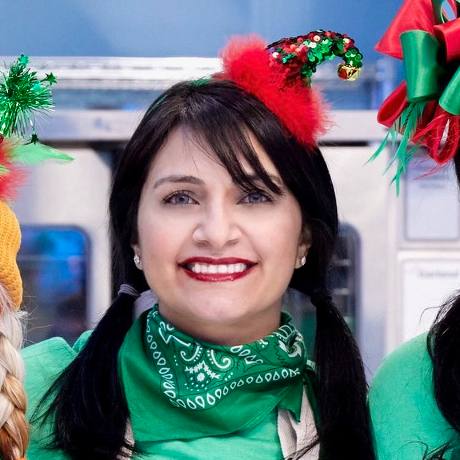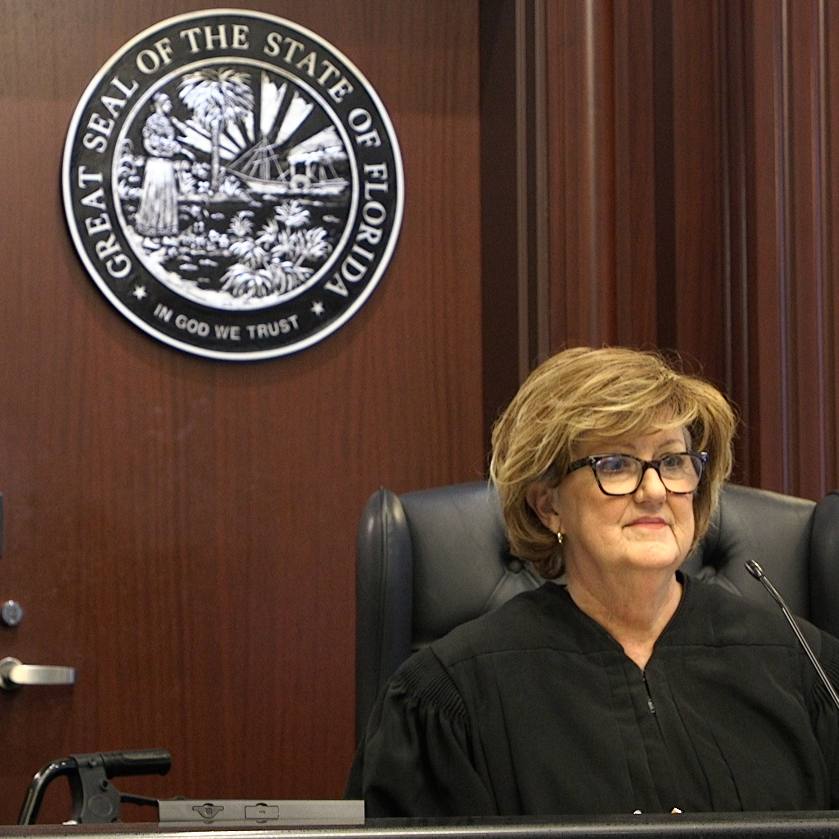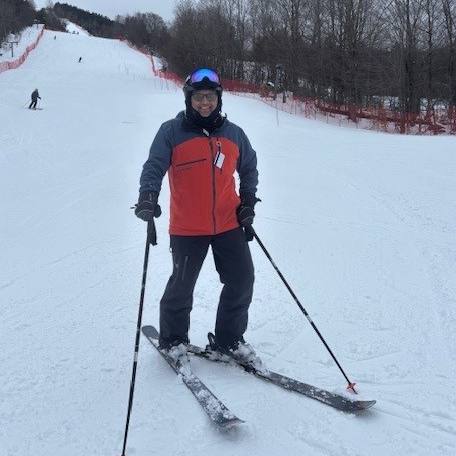 Tom Sherrard often told his wife, Kris, that they really needed to spend more time in Minnesota. Tom has vacationed in Northern Minnesota ever since he was a youngster. Today he, Kris, and daughters Megan and Sarah continue to vacation at the family summer home, where they enjoy boating, fishing, and all the lake has to offer. During 2006, they did spend more time in Minnesota, but it was farther south, at Mayo Clinic.
Tom Sherrard often told his wife, Kris, that they really needed to spend more time in Minnesota. Tom has vacationed in Northern Minnesota ever since he was a youngster. Today he, Kris, and daughters Megan and Sarah continue to vacation at the family summer home, where they enjoy boating, fishing, and all the lake has to offer. During 2006, they did spend more time in Minnesota, but it was farther south, at Mayo Clinic.
Tom first noticed a pea-sized lump on his neck in August of 2005. When he first felt it, he thought perhaps it was a swollen gland that would go away. Because his daughter Megan was to be married in a couple weeks, he didn't want to sidetrack the family from the wedding plans. So he put off seeing a doctor.
He finally made an appointment with his primary care physician in September, but ended up canceling because work got busy. He remained aware of the lump, which wasn't going away, and family members were asking about it. Finally his daughter Megan became very persistent, insisting that he needed to do something about it.
His physician referred Tom to a surgeon who specializes in neck and throat surgery. The biopsies were inconclusive, but the size, texture, and movement of the lump made surgical removal a logical choice. Surgery revealed the malignancy, so Tom had a complete thyroidectomy.
In a discussion with his surgeon, Tom learned that thyroid cancers are generally slow-growing and relatively easy to treat. The hospital tests, however, showed that his was a fast-growing anaplastic thyroid cancer, which is difficult to treat. To confirm its diagnosis, the hospital sent tissue to Mayo for additional pathology analysis.
During his first few days out of the hospital, Tom says, "I was not really too concerned because the surgeon felt he had completely removed the malignant tissue. My wife Kris, however, is much more attentive to things, and she researched anaplastic thyroid cancer on the Internet. What she discovered scared her to death. It seemed everything she read was doom and gloom. She did the homework for me, and I'm very glad she did."
Once Kris and Tom had determined how serious the condition could be, "We started going in circles trying to decide what to do and where to go to do it." Kris's Internet research turned up a few centers with experience in thyroid cancer. "Our local oncologist had no experience with anaplastic thyroid cancer. He suggested seeing a specialist and with the surgeon's referral, I was able to get an appointment at Mayo."
"When I went up there for my exam and evaluation, I wasn't sure whether I required any other treatment. The surgeon was pretty comfortable that it had all been removed," Tom says. But his and Kris's research had led him to the understanding that any remaining cancer cells would be extremely serious.
His first contact at Mayo Clinic was with endocrinologist Dr. Ian D. Hay. "He has a fun sense of humor and made the appointment light-hearted." More importantly, they came away from that appointment with information about the risks and hazards of anaplastic thyroid cancer. They were comforted to learn that because Tom's cancer was caught early, it wasn't necessarily the death sentence suggested by the doom and gloom stories on the Internet.
Once he had decided to be treated at Mayo Clinic, he says, "I rented an apartment about six blocks away. There are plenty of facilities and many options for people who want to stay there for treatment." He set up a remote office so he was networked to his office and could work on his laptop. His circle of family and friends was supportive, with friends making an effort to send "care packages" and to support his wife during the first two or three weeks before she joined him in Rochester.
Tom had heard of Mayo's reputation for many years. Even so, "It was amazing to me how well-orchestrated the treatment was." For example, he had to provide his medical history and background information only once; then every member of his treatment team had access to it. He was also pleased with the efforts the staff made to ensure that he could spend weekends at home. They scheduled his appointments as late as possible on Mondays and as early as possible on Fridays. He liked the way his team shared all the information from diagnostic scans and consulted about what was happening and what needed to happen next. He found it reassuring "just knowing that everybody's on the same page."
Tom's evaluation and treatment team at Mayo included Dr. Hay, a medical oncologist (Dr. Scott H. Okuno), and a radiation oncologist (Dr. Robert L. Foote). They met with Tom to explain the procedures to be performed and how they would affect him.
"The chemotherapy was a light dose," he learned, "to sensitize the cells to make the radiation more effective. It was not too intrusive in my life." Then before beginning treatment, "Dr. Foote explained the radiation therapy. He cautioned me that a lot of things are going on in your neck. He outlined the possibility of permanent damage to the vocal chords and difficulty swallowing among other things. In spite of the possible side effects, I wanted to be cautious about the cancer, and decided to go ahead with treatment and to take every step that I could to ensure the cancer would not come back."
The only side effect from his chemotherapy was "about 24 hours of hiccups following each of the weekly treatments." Toward the end of his radiation treatment, Tom's neck was bright red and he had some pain in swallowing. "It was like having extreme sunburn and a real bad sore throat from a cold. The radiation redness healed surprisingly quickly. I got back to normal very quickly."
"Everything went like clockwork," he says. "I was so impressed with the flow of it and the organization and I am still impressed every time I go back. Everybody throughout the facility helps you to understand what's going on. There's support everywhere you turn."
He mentioned the libraries, conference rooms, and the social workers who will answer questions about personal, emotional, insurance, and financial issues. He appreciated the nurses who wanted to make sure he was able to eat balanced meals and the speech therapist that made an initial evaluation of his speech in case of problems arose later.
A year and a half after completing treatment, Tom reports being basically 100 percent normal except for some dryness in the mouth and throat where the radiation killed off some of the salivary glands. He returns for follow-up visits every three or four months.
"All in all, in spite of the illness, it was really a positive experience," he says. "There are so many knowledgeable, compassionate people there. I know I walked away with a new appreciation for the things that are really important. I've tried to scale back my work and take time to enjoy life with my family and friends. And by all means, when I hear of anyone with a serious illness, I immediately suggest they look into Mayo Clinic."







